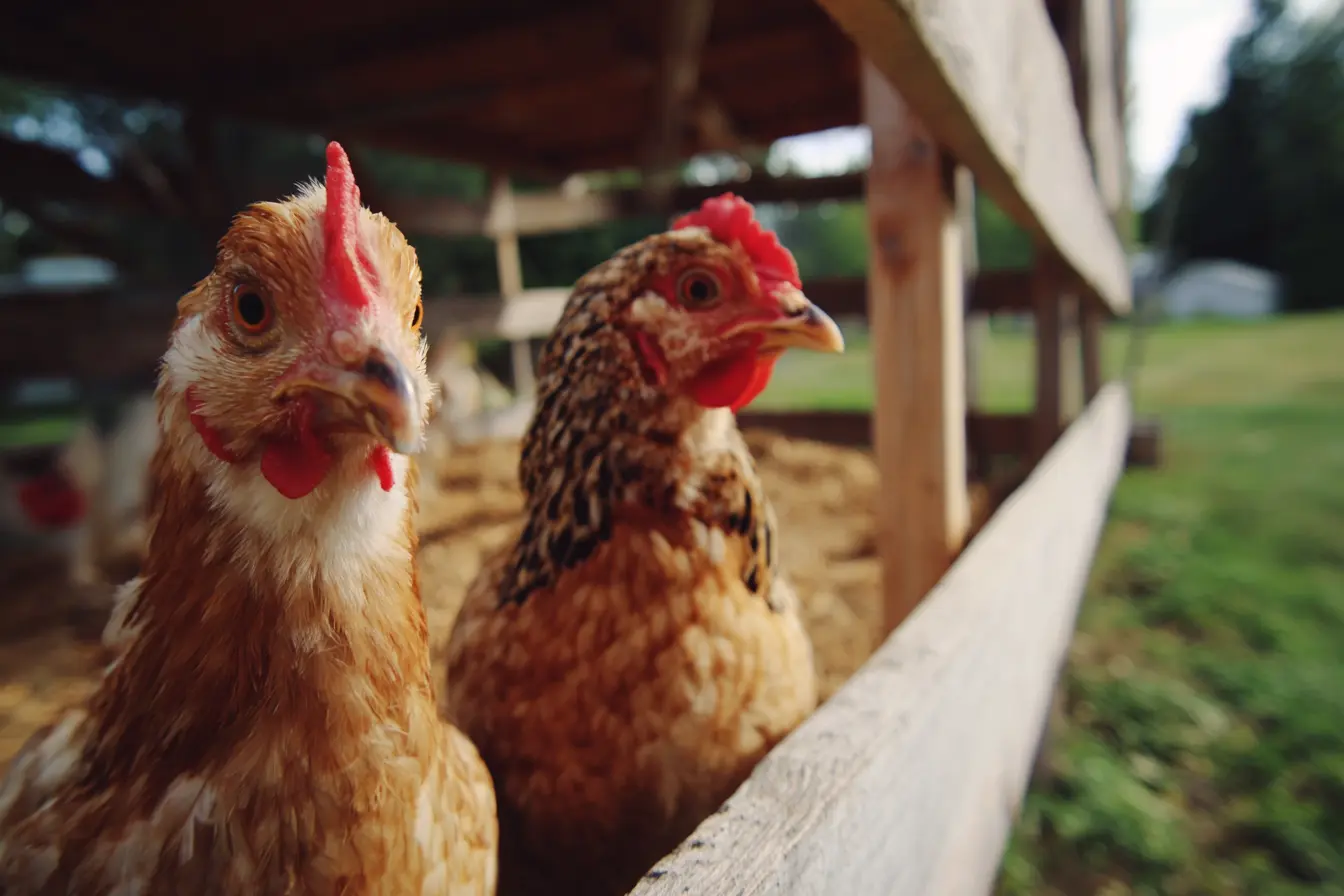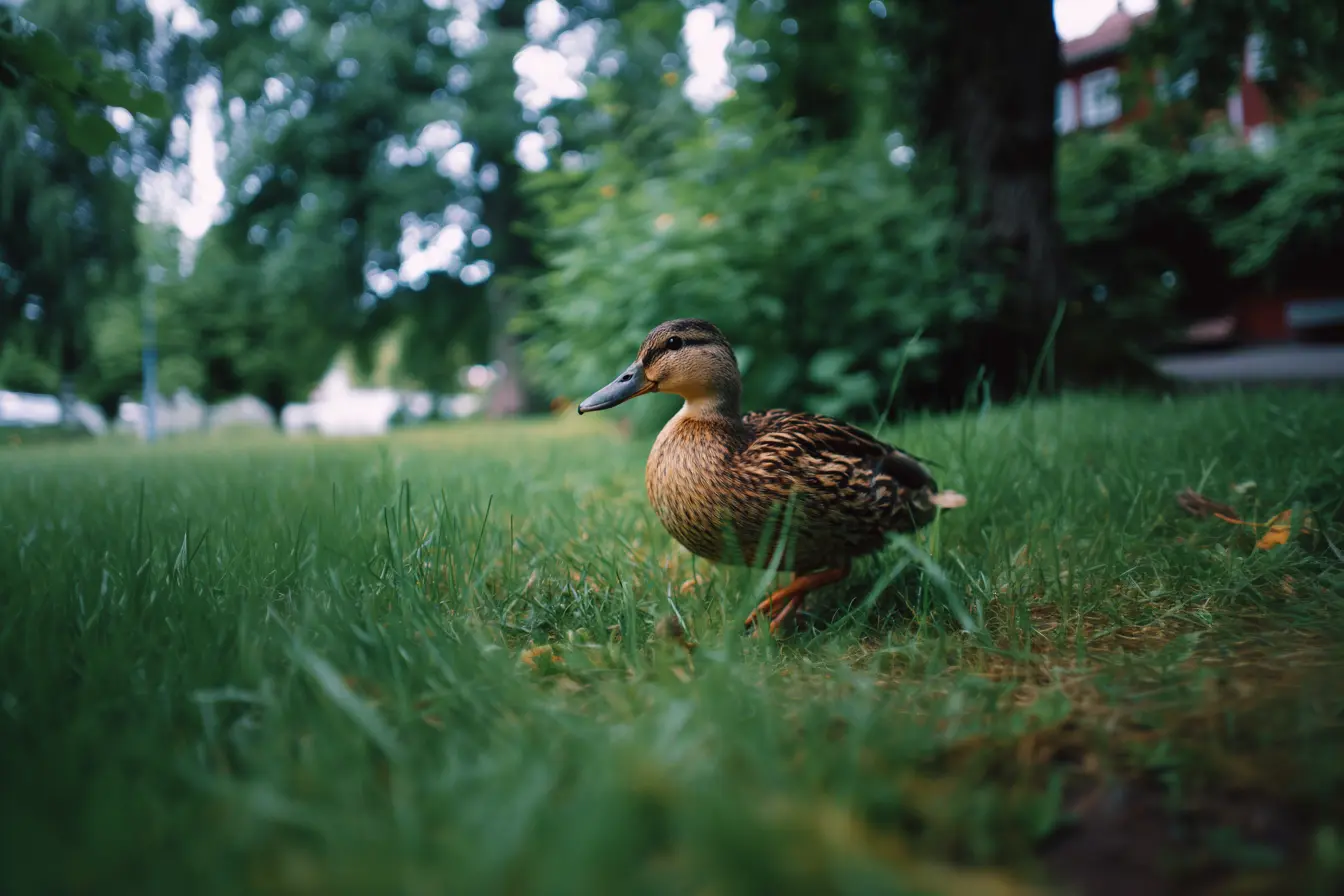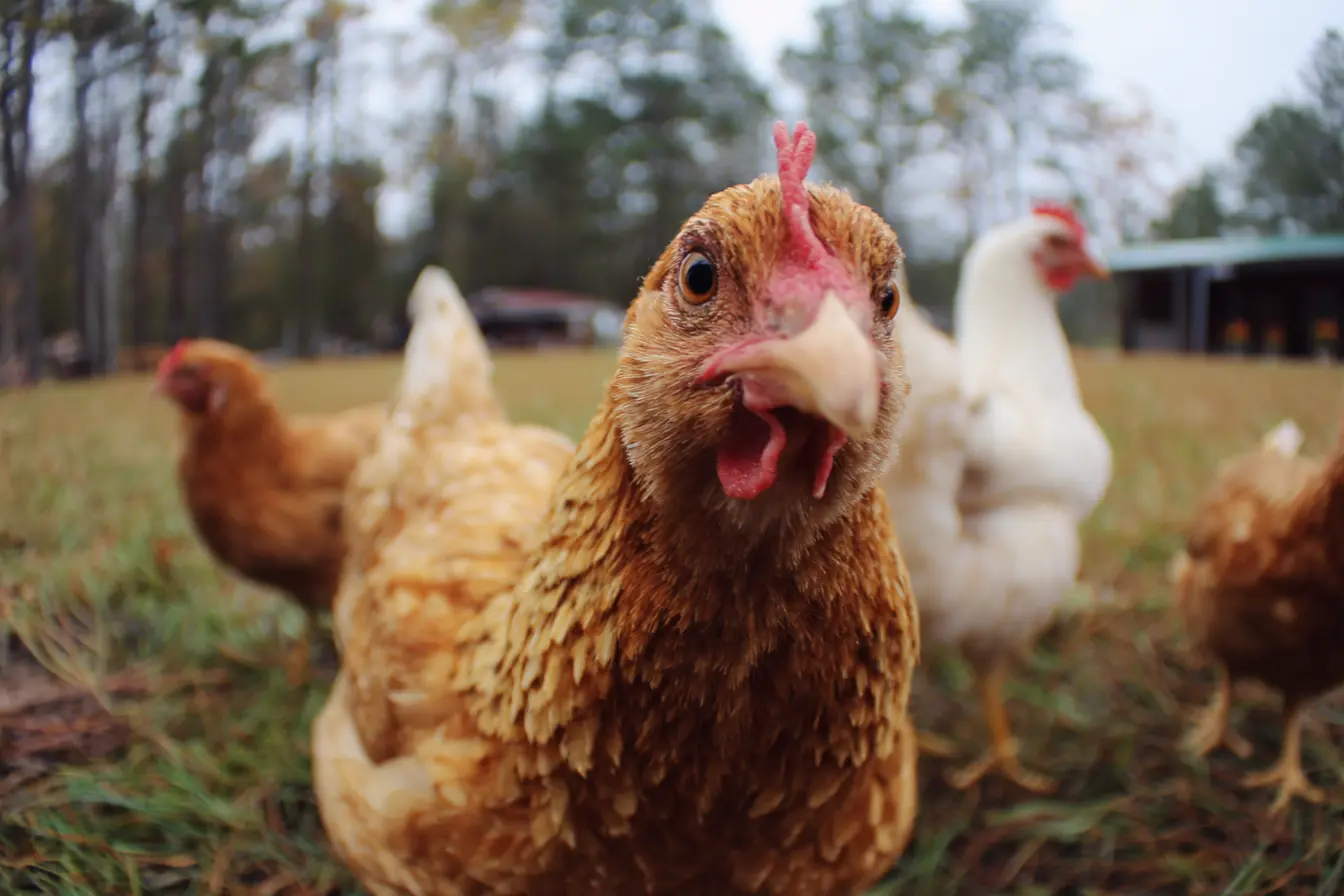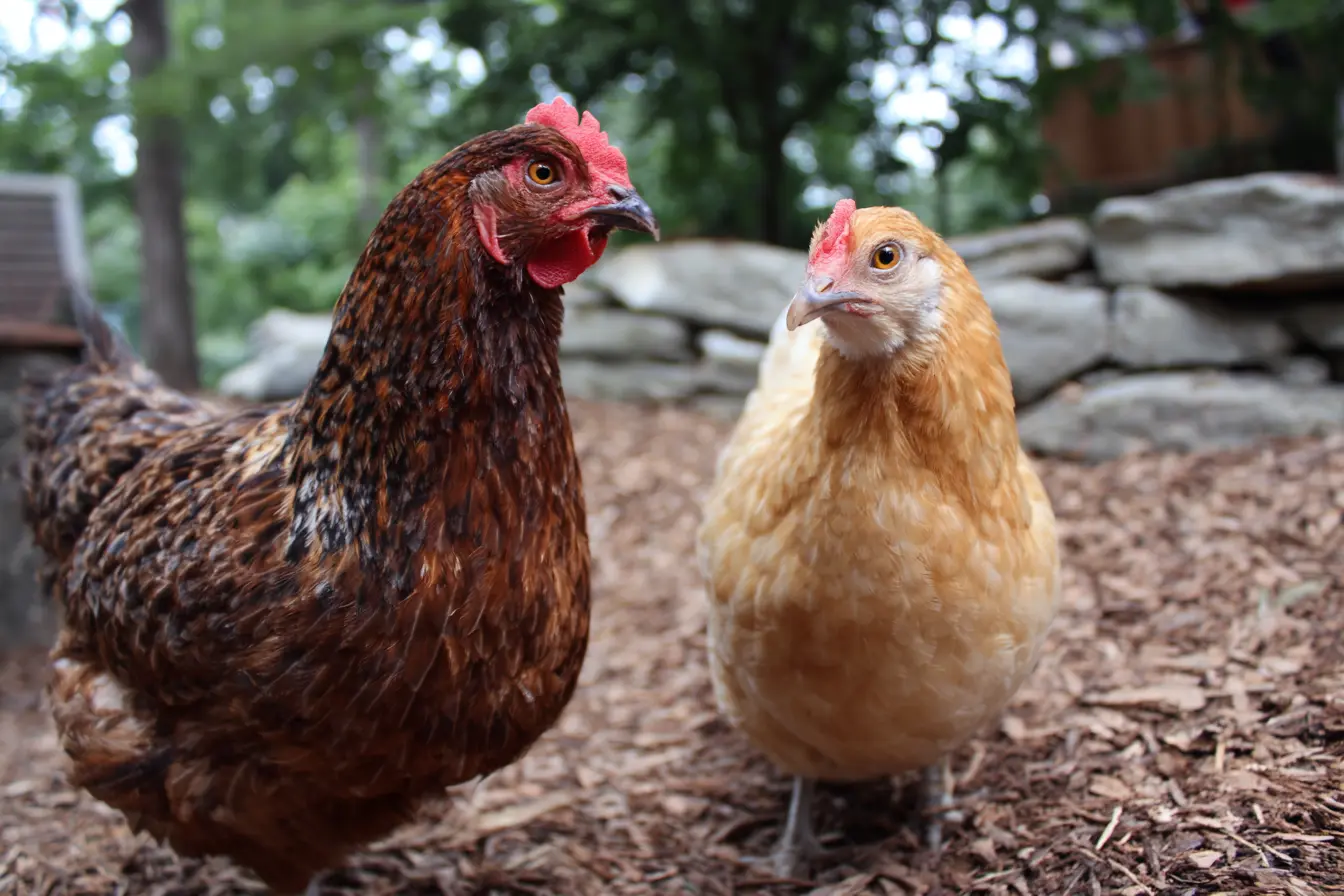
Heat Stress in Chickens
Chickens are remarkably hardy birds, but they are far more susceptible to heat stress than many poultry keepers realise. Unlike mammals, chickens lack sweat glands and rely on a limited set of physiological and behavioural strategies to cool themselves. Prolonged or extreme heat can have serious consequences — from reduced egg production to death.
This detailed guide covers everything you need to know about heat stress in chickens: causes, signs, risk factors, treatment, and prevention.
What is Heat Stress?
Heat stress occurs when a chicken’s body cannot effectively dissipate excess heat, causing its internal temperature to rise. When the ambient temperature exceeds 30°C (86°F), chickens begin to struggle, especially in high humidity.
Severe heat stress can lead to heat exhaustion or heat stroke, which may result in organ failure and death if not addressed promptly.
Why Chickens Are Vulnerable to Heat
Chickens regulate their body temperature through:
- Panting to evaporate moisture from the lungs
- Holding wings away from the body to release trapped heat
- Limited blood flow adjustments in combs and wattles
However, these methods are not always sufficient, especially in high temperatures or poorly ventilated housing.
Risk Factors for Heat Stress
Several factors can increase a chicken’s susceptibility to heat stress:
- High ambient temperatures, especially above 30°C
- High humidity, which reduces the effectiveness of panting
- Overcrowding in coops or runs
- Lack of shade or ventilation
- Poor hydration
- Excessive body weight or obesity
- Heavy feathering or breeds not suited to hot climates
- Stress from transport, predators, or pecking order conflicts
Symptoms of Heat Stress in Chickens
Early recognition is crucial. Signs of heat stress may include:
- Panting or rapid breathing
- Lethargy and weakness
- Holding wings away from the body
- Pale or discoloured combs and wattles
- Decreased appetite
- Drop in egg production
- Loose, watery droppings
- Staggering or wobbling
- Collapsing or lying on the ground with eyes closed
In severe cases, chickens may lose consciousness or die suddenly from heat stroke.
Immediate Treatment for Heat-Stressed Chickens
If you suspect heat stress, act quickly to stabilise the affected bird:
- Move the bird to a shaded, cool, and well-ventilated area
- Offer cool (not cold) water — you can add electrolytes to assist recovery
- Mist the bird lightly with water or use a damp towel (do not soak completely)
- Avoid sudden temperature changes, such as immersion in cold water
- Use a fan to increase air movement if indoors
- Monitor closely for improvement or worsening symptoms
Recovery can take several hours. If symptoms persist or the bird worsens, consult a vet.
Long-Term Effects of Heat Stress
Even if a chicken survives heat stress, long-term impacts may include:
- Ongoing weakness or lethargy
- Permanent drop in egg production
- Reproductive issues in hens
- Increased vulnerability to disease
Preventing recurrence is essential to ensure the bird’s full recovery.
Preventing Heat Stress in Chickens
Shade and Shelter
- Provide natural or artificial shade in outdoor runs
- Use shade cloths, umbrellas, or plant trees near coops
- Ensure the coop is well-insulated from sun exposure
Ventilation
- Increase airflow through open windows or vents
- Use fans in larger or enclosed housing
- Avoid overcrowding by maintaining appropriate stocking density
Water Access
- Provide cool, fresh water at all times
- Use multiple water sources to reduce competition
- Add electrolytes in hot weather to replace lost minerals
- Keep waterers in the shade to prevent overheating
4. Feeding Adjustments
- Feed early in the morning or late evening when temperatures are cooler
- Reduce high-protein or high-energy feeds during heatwaves
- Provide moist treats like watermelon, cucumber, or frozen fruits to increase hydration
Environmental Modifications
- Avoid heat-retaining bedding like straw during heatwaves
- Install misters or foggers in large set-ups (avoid drenching birds)
- Raise coop flooring off the ground to promote air circulation
Behavioural Observation
- Monitor flocks frequently during hot weather
- Isolate birds showing early signs of heat stress
- Avoid stressful handling or transportation during peak heat
Breeds and Heat Tolerance
Some breeds tolerate heat better than others. Mediterranean breeds such as:
- Leghorns
- Andalusians
- Minorcas
are more heat-tolerant due to their lighter build and large combs.
In contrast, heavy or heavily feathered breeds like:
- Orpingtons
- Brahmas
- Cochins
are more prone to overheating and require additional precautions.
Key Takeaways
- Heat stress is a life-threatening condition in chickens, especially above 30°C
- Early symptoms include panting, wing spreading, and lethargy
- Immediate action involves cooling, hydration, and rest
- Prevention relies on shade, ventilation, hydration, and attentive care
- Certain breeds are more prone to overheating than others
Final Thoughts
As temperatures continue to rise globally, managing heat stress in poultry is becoming increasingly important. With good husbandry practices and proactive preparation, you can protect your chickens from the worst effects of extreme heat and keep your flock healthy, productive, and comfortable even on the hottest days.
Contents
Tags
Vets near you
Speciality vets
- Aquatics vet specialists
- Birds vet specialists
- Camelids vet specialists
- Cats vet specialists
- Cattle vet specialists
- Deer vet specialists
- Dogs vet specialists
- Equines vet specialists
- Exotic vet specialists
- Goats vet specialists
- Pigs vet specialists
- Poultry vet specialists
- Sheep vet specialists
- Small Mammals vet specialists
- Wild vet specialists



